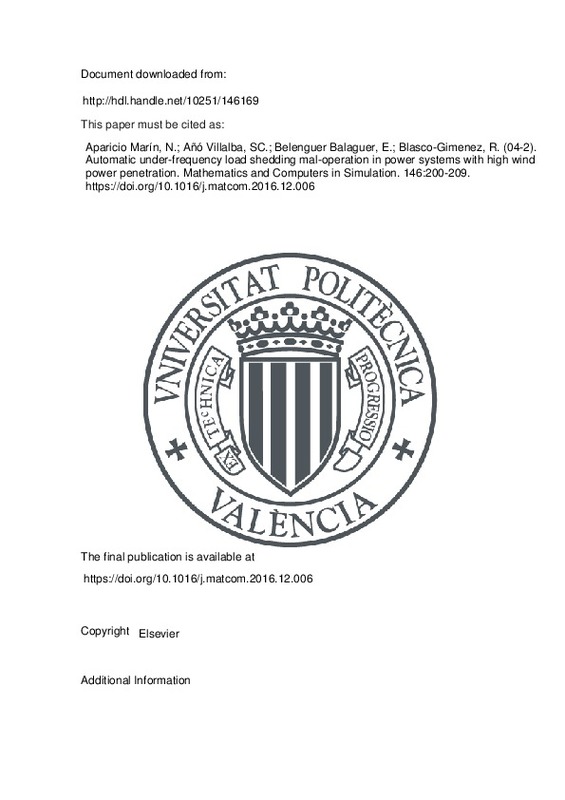JavaScript is disabled for your browser. Some features of this site may not work without it.
Buscar en RiuNet
Listar
Mi cuenta
Estadísticas
Ayuda RiuNet
Admin. UPV
Automatic under-frequency load shedding mal-operation in power systems with high wind power penetration
Mostrar el registro completo del ítem
Aparicio Marín, N.; Añó Villalba, SC.; Belenguer Balaguer, E.; Blasco-Gimenez, R. (2018). Automatic under-frequency load shedding mal-operation in power systems with high wind power penetration. Mathematics and Computers in Simulation. 146:200-209. https://doi.org/10.1016/j.matcom.2016.12.006
Por favor, use este identificador para citar o enlazar este ítem: http://hdl.handle.net/10251/146169
Ficheros en el ítem
Metadatos del ítem
| Título: | Automatic under-frequency load shedding mal-operation in power systems with high wind power penetration | |
| Autor: | Aparicio Marín, Nestor Belenguer Balaguer, Enrique | |
| Entidad UPV: |
|
|
| Fecha difusión: |
|
|
| Resumen: |
[EN] Countries with a limited interconnection capacity suffer substantial frequency variations after large incidents so they use automatic under-frequency load shedding schemes to arrest the frequency decay. Some of these ...[+]
|
|
| Palabras clave: |
|
|
| Derechos de uso: | Reserva de todos los derechos | |
| Fuente: |
|
|
| DOI: |
|
|
| Editorial: |
|
|
| Versión del editor: | https://doi.org/10.1016/j.matcom.2016.12.006 | |
| Código del Proyecto: |
|
|
| Agradecimientos: |
The present work was supported by the Spanish Ministry of Economy and Competitivity and European Union FEDER funds under grant DPI2014-53245-R and by the Universitat Jaume I through project number P1 . 1B2015-42. Part of ...[+]
|
|
| Tipo: |
|







![[Cerrado]](/themes/UPV/images/candado.png)


